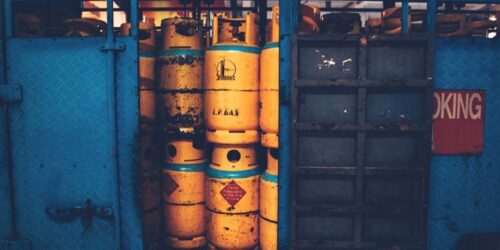As winters go deep, the all-so-familiar natural gas crisis goes deeper. People are struggling to meet the heating requirements across the country. The national pipeline network serves no less than 12 million households. Save for two to three months of trouble, where some may have to rush for alternate arrangements to piped gas – natural gas to these 12 million households is largely a smooth affair. And more importantly, a very cheap one.
The other two-third of the households in Pakistan do not have the luxury to piped gas. While they are not subject to load shedding, they pay a significantly heftier price to cooking and heating. As gas reserves deplete, and government finds it tough to channel and arrange more imported gas under current infrastructure and pricing bottlenecks, there has been evidence of more and more users making the switch to Liquified Petroleum Gas (LPG) cylinders.
Firewood is the fuel of choice (or the lack of) for most Pakistanis, especially in the rural settings. The Pakistan Bureau of Statistics puts down the consumption weight for rural settings close to 5 percent, and that combined with liquefied hydrocarbons arrive at 6 percent. This easily outstrips natural gas weight in the consumption basket, but fails to gather even a fraction of press, or the authorities’ attention.

Pakistan’s pricing strategy for domestic usage of natural gas has long been a point of criticism, which has only grown as the reserves continue to go down. Decades of cross subsidies and encouraging wastage of the precious resource are well-documented, and the problems have now amplified as more imported and expensive gas is routinely diverted to domestic consumers, without adequate pricing mechanism.
Natural gas for the lowest consumption slab users is prices at under a dollar per MMBTU, whereas for the highest consumption slab it goes up to $8/mmbtu. The average for domestic consumption is close to $3/mmbtu. Compare this to an LPG user, who in FY22 till date has paid an average of $24/mmbtu. The firewood at current prices cost around $7/mmbtu. Even if LPG prices revert to the mean sooner, that will still be at least twice as expensive as natural gas.

Mind you, a vast majority of firewood and cylinder users fall in the bottom two income quintiles, paying multiple times higher price for their heating requirements. It was high time a decade ago, it will still be not half bad, if the distortions are sorted. How much economic and social sense does it make to continue subsidizing urban natural gas users mostly in higher income quintiles, over those sitting at the bottom of the pyramid? About time the disparities are narrowed.







